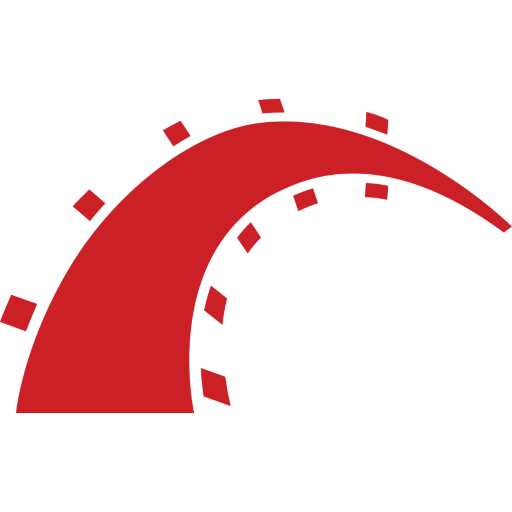Ruby on Rails is a server-side web application framework, written in Ruby and popular for its developer-friendliness, speed of development, and powerful conventions. Kamatera provides the speed, scalability, and control necessary to bring your projects to life. Our intelligent auto-scaling means traffic spikes are no problem. Your Rails app automatically scales up during high demand and down during quiet periods. With one-click staging environments, database migrations, and seamless CI/CD integration, we’ve got everything you need for professional Ruby hosting.


Why Rails developers choose Kamatera
Secure environment: Benefit from built-in security features and the ability to implement advanced firewall rules and DDoS protection.
Wide range of operating systems: Deploy on your preferred Linux distribution (Ubuntu, Debian, CentOS, and more).
Global data centers: Minimize latency for your users worldwide by deploying your Rails hosting in any of our strategically located data centers across four continents.
Flexible database support: Easily integrate and host your chosen database (PostgreSQL, MySQL, MongoDB, Redis) alongside your Rails application.
Price Calculator
Data Centers Around the Globe

Frequently Asked Questions
Operating System:
Linux: Highly recommended for optimal compatibility and performance. Ubuntu, Debian, CentOS, Red Hat, and Fedora are popular choices.
macOS: Suitable for development and smaller projects, but not ideal for production environments due to potential software stability and administration challenges.
Windows: Supported, but often requires additional configuration and might have limitations for certain features.
Hardware:
CPU: Modern 64-bit processor with at least 2 cores for efficient performance.
RAM: Minimum 4GB, but 8GB or more is recommended for larger projects and faster development.
Storage: Minimum 20GB for Rails installation and project files, plus space for databases, logs, and media assets.
Software:
Ruby:
Version 2.7.5 or higher is recommended, with the latest stable version preferred for optimal performance and security.
Use a version manager like rbenv or rvm to manage multiple Ruby versions effectively.
Rails: The specific version depends on your project requirements and compatibility with gems.
Database:
PostgreSQL is the preferred database for Rails due to its performance and features.
MySQL and SQLite are also supported, but PostgreSQL is generally recommended.
Web Server:
Apache or NGINX are common choices.
Passenger or Puma are popular application servers for running Rails applications within the web server.
Node.js and Yarn: Often required for asset pipeline management and JavaScript dependencies.
For more detailed information, refer to the Ruby on Rails installation guide.
Common use cases for Ruby on Rails include:
· Web application hosting: Power dynamic websites, SaaS platforms, and custom web applications.
· E-commerce platforms: Build and scale robust online stores with secure transactions.
· API backends: Host high-performance APIs for mobile apps and other services.
· Development and staging environments: Create isolated, customizable environments for testing and development.
· Content management systems: Deploy and manage content-rich platforms.
Several web frameworks exist as alternatives to Ruby on Rails, each with its own set of features, programming languages, and development philosophies. Here are some popular alternatives to Ruby on Rails:
· Django (Python)
· Express.js (JavaScript/Node.js)
· Laravel (PHP)
· Spring Boot (Java)
· Flask (Python)
· React (JavaScript)
· Angular (JavaScript/TypeScript)
· Symfony (PHP)
· Rails API (Ruby)
· ASP.NET Core (C#)
· Phoenix (Elixir)
Convention over configuration: Rails embraces conventions more strongly than frameworks like Django or Spring, reducing configuration but potentially limiting customization.
Full-Stack vs. microframeworks: Rails provides a comprehensive full-stack solution, while options like Flask or Express.js offer more flexibility for smaller projects or custom architectures.
Developer experience: Rails prioritizes developer productivity and enjoyment, emphasizing clean code and conventions, while frameworks like Spring might focus more on enterprise-level features and scalability.
Ruby on Rails uses SQL (Structured Query Language) for interacting with relational databases.
Kamatera provides a secure environment with built-in security features and the ability to implement advanced firewall rules and DDoS protection to keep your data safe. We also offer disaster recovery services, to minimize the impact of any unforeseen event by providing comprehensive backup, replication, and failover capabilities.
Absolutely. Kamatera provides full root access, allowing you to install specific Ruby versions, gems, databases, and configure your environment exactly as your Rails application requires.
Yes, you can easily scale your CPU, RAM, and storage resources up or down in real-time as your application’s traffic and demands fluctuate, ensuring your projects always have the power they require.
Kamatera utilizes cutting-edge hardware, including NVMe SSD storage, perfectly tuned for Rails environments, ensuring blazing-fast load times and smooth application responsiveness.
Kamatera offers high-performance cloud servers optimized for Rails, instant deployment, full root access for customization, on-demand scalability, high availability (99.95% uptime), global data centers for low latency, and 24/7 expert support.
















